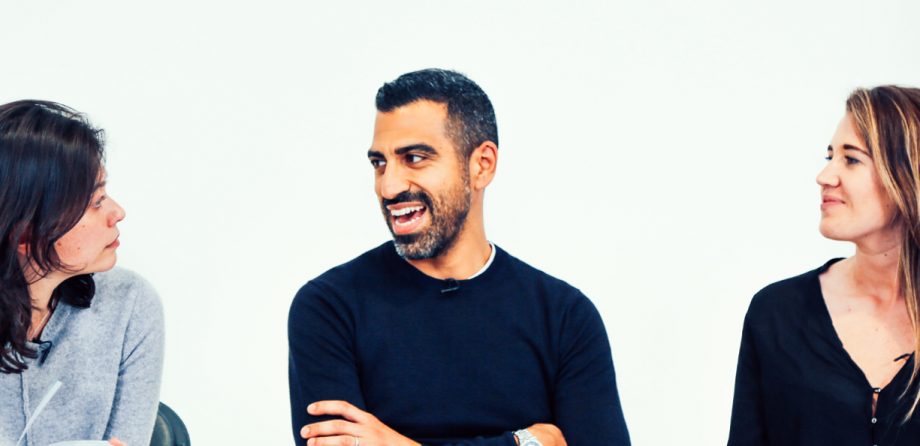In Conversation With…
Arkin Salih
Arkin is the newest member of the team of Directors at NKD, bringing with him 20 years of experience in learning and development, retail and hospitality at some of the world’s most well known brands. He was previously Head of Learning and Development at Harvey Nichols group, and Learning and Development Manager at Harrods, where he developed the U.K.’s first BA (Hons.) Degree in Sales exclusively for the luxury retailer.
‘The trouble with a lot of service training is that it goes straight into the ‘what’. It tells you what to do to provide great service – you must smile, you must build rapport, you must have open body language – which is all absolutely true, but it doesn’t tell you the ‘why’. Why do that?’
NKD: Retail is commonly thought of as a tough industry, where you are often dealing with people and difficult situations. How do you energise people who might have this mindset?
Arkin Salih: Well, I think that’s down to the skill of the leadership in terms of energising people. You can’t motivate people, you can only provide a motivating experience. The same is true if you’re working in any other customer service role or any other industry. I do think it’s a skill – understanding what motivates your team, what excites your team. Human beings are all different and that’s no different if you work in retail, or banking, construction, or in an office – we all have different motivators.
NKD: So, is the role of a leader to give someone the space to fulfil those motivations, and connect their personal motivations with a communal one?
AS: I think a skilled leader will always tap into what motivates their team, and provide a safe place for them to feel that they can fulfil what motivates them, because it all works towards the common good. What’s really nice about working in different environments with different sorts of people is that you see we’re all motivated by different things – everyone is going to bring something different to the table.
NKD: You’ve identified that your team needs some sort of skills training, whether it be for behavioural change, technical skills or something else. What is the best way to go about this?
AS: It is that classic thing of the 70:20:10; you’ve got to have a mix of on-the-job practical doing, that needs to be supported by some coaching, mentoring, shadowing in the workplace. But there is absolutely a place for the 10%, the off-the-job learning, where you are providing a safe space to explore issues, to debate things, to have a go, to ‘role play’. A learning environment that is off-the-job provides a safe place to do that – to have those discussions, to have those debates. It’s also about how you structure that; again, it is about tapping into individual motivators.
NKD: So, what do you think that classroom-based learning should look like?
AS: The trouble with a lot of service training is that it goes straight into the ‘what’. It tells you what to do to provide great service – you must smile, you must build rapport, you must have open body language – which is all absolutely true, but it doesn’t tell you the ‘why’. Why do that? And for me, it also starts with understanding your customer. When you create service training that starts with the ‘why’ – why we give great service, why is our customer even here? – we can extend the why to also include the ‘who’, so who is our customer? How can you think about giving great customer service if you don’t understand who your customer is?
In my previous roles, we’ve spent a huge amount of time understanding the ‘who’ and the ‘why’. This is the kind of information that the board has – CRM data that tells us ‘this is our customer, this is their profile, this is the future of our customer’ – but it’s the sort of information the CRM team and the board usually keep to themselves. When I’ve seen this work really successfully it’s when we’ve shared those insights with our teams. You end up with staff members who totally understand the ‘why’ and the ‘who’. It now makes more sense why the kind of service we are trying to provide in their brand is really important, and they start defining the next steps – the ‘how’ and the ‘what’ – for themselves. It’s hugely empowering and motivating.
NKD: It’s that ‘why’ which helps people connect with a brand.
AS: Yes. Are you a waiter in a pizza restaurant because it’s just a job to pay the rent and its near where you live? Or, are you there because you’re a real foodie, you really enjoy Italian culture and you’re really passionate about the different flavours.
NKD: And when the company is also passionate about those things – that’s when it works well.
AS: Yes! When you have employees and a leadership team who all understand the ‘who’ and the ‘why’, and how that feeds into the ‘what’ and how’ – that’s when you get an amazing customer experience versus an average customer experience.
